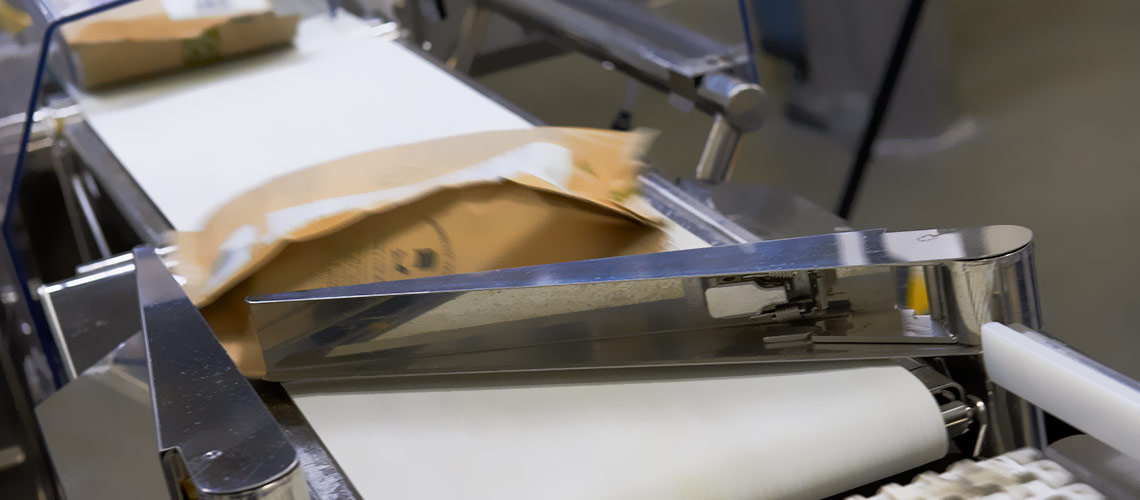
Overall, packaging and processing industries employ checkweighers to prevent undesirable underweight or overweight items from reaching the market. These checkweigher save producers from having to go through the recall procedure or deal with consumer complaints about underweight items. Furthermore, checkweighers detect irregularities in food goods, increasing process safety. This checkweigher guarantees that any items that were potentially contaminated throughout the packing process are thoroughly tested to ensure customer safety.
However, food inspection is most effective when checkweighers, x-ray machines, and metal detectors are utilized together. This is because each inspection instrument may identify a variety of pollutants. A food metal detector, for example, may identify impurities made of ferrous, nonferrous, or stainless steel.
Furthermore, checkweigher equipment may greatly cut total material prices. By guaranteeing that each product is the exact weight, the checkweigher eliminate the danger of having to reject goods that was erroneously packed. Checkweigher also enhances the process time by having weight inspection done swiftly and efficiently instead of manually.
Checkweigher machines should be used in all food packing facilities to guarantee that each product meets the specified weight. Manufacturers may profit from these devices by lowering costs, boosting customer happiness, and improving product quality.
What are Checkweigher Machines Used For?
Checkweigher machines can weigh things produced on a production line. These checkweighers are frequently used to weigh unwrapped items before the packing process. Checkweigher machines are commonly used for the following applications:
- Checkweigher Determining underweight or overweight products
- Checking for missing components such as labels or instructions
- Verifies count by weight by checking for a missing carton, bottle, etc.
- Classifying products into weight zones
- Measuring and reporting production line efficiency
- Checkweigher will Weighing before and after in order to check process performance
- Checkweigher Ensuring compliance with net contents law
- Fulfilling reporting standards

Why Need to Use Checkweigher
- Avoiding Profit Reduction
Perhaps the most obvious reason to use checkweighers is to save money. Overfill is sometimes referred to as a "giveaway" since it is stuff that is not paid for. Even if overfill quantities and product value are minimal, overfilling causes significant financial loss.
Giving away even one gram of a product per package can result in thousands of dollars in lost revenue, in addition to the cost of any packaging wasted on products that cannot go to market.
- Using Checkweigher Can Meet Consumer Expectations
Customers expect to get what they paid for. Whether it's a pound of meat, a quart of juice, or a dozen pieces of candy, consistent and exact weights are a quality indicator that drives customer loyalty.
- Complying with Government Regulations
Unlike traditional random package testing, checkweigher devices test your whole manufacturing line. Checkweighers assure compliance by testing each package and removing those that are out of specification. Furthermore, checkweigher systems allow you to avoid hefty fines for breaking USDA/FSIS or NIST package labeling standards.
- Checkweigher Maintaining Filling and Packaging System Efficiency
Underweight packages can assist discover issues with the procedures utilized to fill your shipments. Weight fluctuations suggest filling concerns when filling individual product packages, liquid bottles, multi-component containers (for example, trayed frozen foods or meal kits), or cartons with several packages.
Inline checkweigher delivers continuous feedback and rapid alarms, allowing processors to maintain maximum packing efficiency and accurate fill weights, volumes, and amounts.
- checkweigher Discovering Defective Products or Packages
Underweight measures may indicate product flaws and/or container issues, resulting in product leakage or loss.
- checkweigher Improving Sampling Efficiency and Effectiveness
Unlike typical spot-checking techniques, which test numerous packages multiple times over a shift, an inline checkweigher system delivers continuous sampling and feedback on each package produced. This minimizes the possibility of sampling mistakes, lowers the expenses involved with having someone draw, measure, and record sample data, and enables a fast reaction to any difficulties.
- Improving Process Predictability and Efficiency with Checkweigher
Using checkweighers early in a process yields insights that assure downstream performance. Confirming ingredient batch weights, for example, provides consistency in process performance and product quality. Measuring pre-cooked weights can help to avoid irregular or incomplete heat processing, which can influence the quality or safety of the completed product.



 Singapore
Singapore